-
The lack of basic social services accessible to the poorest of the poor remains as the biggest stumbling block for health workers who wish to finally flatten the curve of the pandemic.
-
Volunteer community-based health workers are doing their share to provide information drive amid the government’s poor response to the pandemic
By JANESS ANN J. ELLAO
Bulatlat.com
MANILA – For the past days, several residents of Villa Lois in the urban poor-occupied government housing project in Pandi, Bulacan frequented 53-year-old Rosalita Fortaliza’s residence. They were asking for help as they prepare not only to combat the COVID-19 pandemic but also to somewhat survive from decades-old problems resulting from the country’s poor social services.
“We tell them to wash their hands frequently. We tell them to eat healthy food. But they [do not] have access to these,” she told Bulatlat in a phone interview.
Fortaliza was among urban poor dwellers who took a series of community-based health workers training from the Task Force on Urban Conscientization, a project initiated by the Association of Major Religious Superiors of the Philippines (AMRSP). For the past three years, she and eight others have been helping at least 1,500 households.
As of this writing, the Philippines has 307 confirmed COVID19 cases, with 19 deaths. Still, the Philippine government, through its health department, remains adamant about mass testing, saying that while it is in their plans, the government will do it “if we have enough resources and the government can do it, and it is already imperative for the government to do it.”
Read: ‘Without mass testing, PH fighting COVID-19 blindly’ — doctors
No less than the World Health Organization (WHO) found it unimaginable what can happen if the COVID-19 hits a country with a poor health system. While the Philippine government denied having such, the stories of the residents of Pandi prove otherwise.
“If the government cannot do this for us, we have to do something for our community,” she said.
Fragmented health system on the ground
Fortaliza would not have thought of volunteering as a community-based health worker if only the public health system was accessible. Big government hospitals, she said, are at least a town away from the resettlement area. Those with serious health conditions, on other hand, are brought to Manila.
Such uneven development of government hospitals has long been largely blamed, for many years, on the US-dictated devolution of the Philippines public health system which began in 1992. This devolution, after all, resulted in less funding for local government hospitals which forced local governments to require even indigent patients to pay more.
Read: Under a fragmented health care, Philippines is ill-equipped in combating COVID-19
Independent think-tank IBON Foundation said that the Philippines never reached the recommended WHO ratio of 20 hospital beds for every 10,000 population. Prior to the devolution of the public health system, the Philippines at least had 14.4 beds for every 10,000 population in 1990. This was reduced to 9.9 beds per 10,000 population in 2014.
Community health services continue to be a challenge as only 47 percent of villages have local health stations as of 2018. The doctor-to-patient ratio of 1:33,000 is also a far cry from the WHO recommendation of 1:1,000.
“Even if they have (a health center), there is still no guarantee that there are doctors or nurses who attend to the people. Some do not even have medicines to give,” said Edwin Pacheco, a nursing attendant and president of the employees union at the National Kidney and Transplant Institute (NKTI) in Quezon City told Bulatlat.
In Pandi, Bulacan, Fortaliza said that among the common illnesses in their community are hypertension and diabetes, which the Center for Disease Control and Prevention listed as among the underlying illnesses that may put people at risk for more “serious complications” from COVID-19. Most residents do not take their respective maintenance drugs daily as their little income is usually spent on food and other necessities. “Most of the time, we only get our maintenance prescriptions whenever there are medical missions here. We would split these medicines among those who cannot afford it.”
Their lack of access to medicines is in stark contrast to the millions-worth of medicines found by the Commission on Audit (COA) in some regional offices either as expired or only has six months to go.
The WHO has long been recommending that at least four percent of the total gross domestic product be allocated to health spending. However, IBON Foundation said that the Philippines has never gone beyond this since mid-1980s.
Public health spending has actually suffered massive budget cuts. In the 2020 budget, the seeming increase is actually allocated to Personnel Services and Maintenance and Other Operating Expenses. In a previous interview with a retired health worker, the Research Institute for Tropical Medicines (RITM) which is currently in the forefront in the fight against COVID-19 has suffered a 57-percent budget decrease in 2017.
Apart from the massive budget cuts in the public health program, COA has noted irregularities, underspending, and incompelete infrastructure programs such as the P8.1-billion school-based health facility that did not push through in 2017 due to inadequate planning.
In 2017, at least 12 government hospitals reported a decrease in treatment success of its National Tuberculosis Control Program, resulting in its failure to attain a 90-percent target treatment success rate, according to COA.
Working conditions
The government’s handling of the COVID-19 pandemic has also exposed the poor working conditions of its health workers.
In the first two days of the implementation of the lockdown, where the national government suspended mass transit, making health workers among the thousands of those stranded. Pacheco, who lives in Antipolo, said he walked several kilometers to do his hospital duty, only to be forced to return home upon reaching a government checkpoint.
Read: No social distancing for commuters on 2nd day of quarantine
From his experience as a nursing attendant for 18 years, Pacheco said that the most glaring hazard faced by health workers is the lack of personal protective equipment (PPE). Even those available, he said, might not be apt to combat the virus.
While NKTI is not being eyed to accept both possible and confirmed COVID-19 patients, Pacheco said that this hospital is preparing nonetheless because a good number of its patients are seeking either dialysis or chemotherapy, hence their vulnerability to the pandemic. “We still do not have a COVID patient. But this is why we call for transparency. We are mere nursing attendants after all and at times not privy to the medical records of patients. And yet, we are in close contact with them, especially whenever they need assistance.”
Last March 21, the Philippine Heart Association (PHA) confirmed the death of a young cardiologist due to COVID-19. The doctor, the group said, “lost his young life while fulfilling his duties as a doctor.”
Earlier, the Alliance of Health Workers (AHW) expressed alarm over the number of health workers who got exposed to the virus as they continue to be in the frontlines without proper PPE.
“How are we going to provide quality care services to our patients if we are getting sick? How can the government not have the heart to provide us a proper and quality PPE?” said Robert Mendoza, AHW secretary-general.
IBON Foundation said that despite the scarcity of government health workers, the Labor department advised in 2013 that nursing graduates should instead look for work in business process outsourcing (BPO) or as health care secretaries as they can no longer hire them in government hospitals. Three years later, IBON Foundation said that at least 53 nurses per day left the country to work abroad.
Various progressive groups have long been calling for the upgrading of salaries of entry-level government nurses to P30,000 and the allocation of at least P6.55 billion for the Health department’s nurse deployment program.
Read: Groups call for the realignment of 2020 budget amid SEA Games controversies
Considered as the fourth country in the world most affected by COVID-19, Spain nationalized its private hospitals as it tries to better handle the pandemic. UP College of Medicine Professor Gene Nisperos, in a Zoom conference, said that this may still be a long shot in the Philippine setting, stressing that many will bid against this should a proposal be brought before the proper forum.
Still, Nisperos said that the Philippine government can at least for the time being nationalize its health workers. This, he said, will provide them a wider perspective and consequently deploy health workers to areas with high COVID transmission.
Meanwhile, big and high-end private hospitals in Metro Manila has recently issued a statement, calling on the government to instead come up with center that will cater to possible and confirmed COVID-19 patients. This, Nisperos said, could set a difficult precedent as there are more privately-owned hospitals than state-owned or –managed ones.
Lack of economic support for vulnerable, still the biggest challenge
Above all these, the lack of basic social services accessible to the poorest of the poor remains as the biggest stumbling block for health workers who wish to finally flatten the curve of the pandemic.
Pacheco, who has joined several medical missions to far-flung communities with his colleagues in AHW, said he cannot imagine how these rural areas will combat COVID-19. In a small village in Basey, Samar, one of those badly-hit by Typhoon Haiyan, the health worker said residents “revere doctors and nurses” because “they consider them as rare species.”
“(The public health system)’s sorry state is truly disheartening, especially when the most vulnerable have no money to buy medicines and yet these are left to rot in warehouses managed by the health department,” Pacheco said.
Aside from health care, there are also communities who still do not have access to water. Fortaliza said the best government protection is ensuring food on their table. “Our neighbors here, too, want to follow government instructions to stay at home. Who would want to brave risks of afflicting COVID-19? But people need food.”
Local government officials have been restricting movement in the Pandi housing, she said, adding that those without identification cards as proof that they have work elsewhere are advised not to leave. Those who are set to apply for work, meanwhile, are forced to stay.
Residents wander around the village, she observed, thinking of how they can get through this.
The Pandi local government has yet to make its presence felt in the community, as far as the COVID-19 response is concerned. Fortaliza said that the local chapter of Kadamay is planning to have a dialogue with their mayor. “But this got me thinking. Who should initiate the dialogue? Is it supposed to be the local government […] or us?”
Information drive still needed
Davao-based anesthesiologist and community medicine practitioner Jean Lindo told Bulatlat in an online interview that the declaration of national emergency as the cornerstone of government’s response against COVID19 would have turned out for the better if a “full swing public education” was conducted first. “Massive education is very crucial because citizens can actually help.”
Telling people to follow personal hygiene or maintain social distancing, for one, is not enough. Lindo said that the science behind it and understanding its specifics must be explained.
In the government housing project in Pandi, Bulacan, Fortaliza said that there has been no information drive from their local government as regards COVID-19.“People tend to panic. The slightest fever and cough make them think they have been afflicted with the virus. We have been going around explaining what it is, how one gets it, and most importantly how to prevent it.”
In Tondo, Manila, community-based health workers and women’s group Gabriela used do-it-yourself posters as part of their information drive on COVID-19. The same efforts were also done by their members in Quezon City and Valenzuela City.
Gabriela secretary-general Joms Salvador said, “they prioritized a militarist lockdown instead of providing widespread, systematic, and community-level support for the people. In the sprit of bayanihan (solidarity), people manage to get through their daily lives.” (With reports from Kath Cortez / Davao Today)









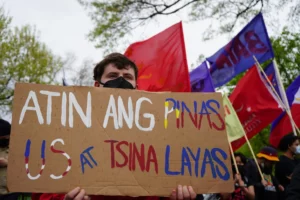
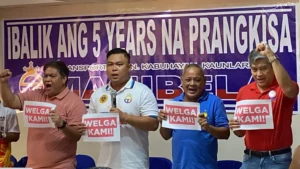
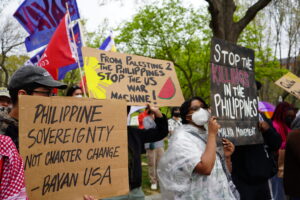

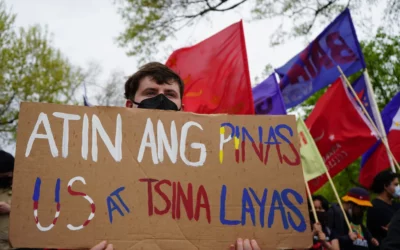
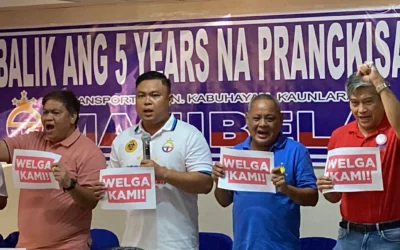
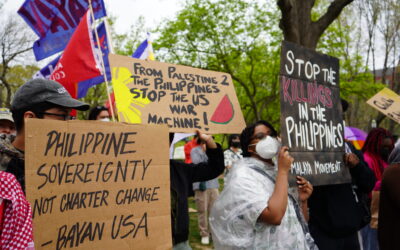
0 Comments